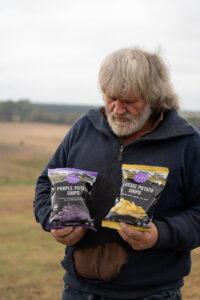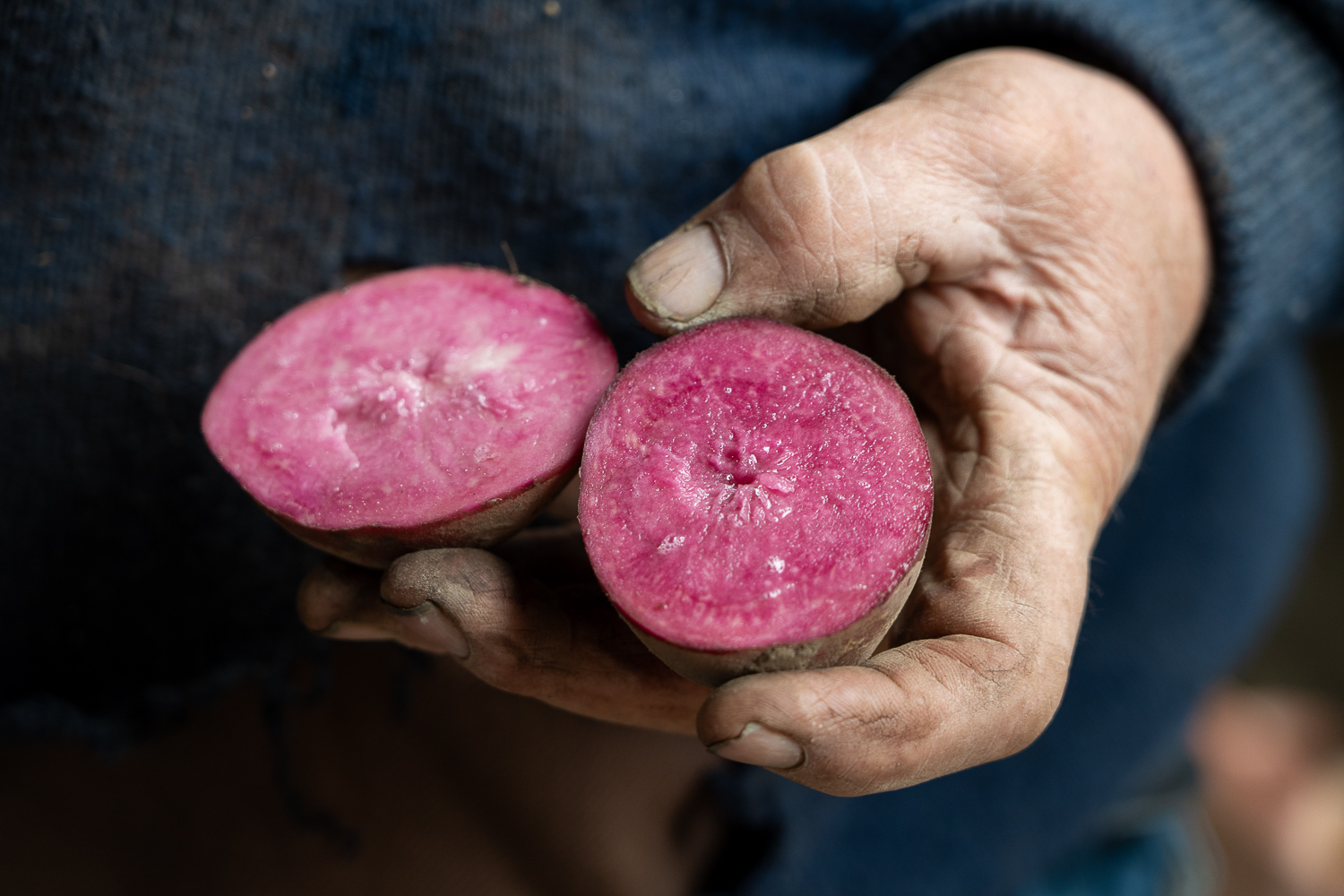Simply Better crisps starts with high quality potatoes
Seed potato grower Peter Scott describes himself as a simple man, but he is undoubtedly one who has a vision for the perfect red, purple or white potato crisp, and has doggedly kept at it to achieve the best possible results.
The Scott family have been in the Otway Ranges region of Victoria for many years, as dairy and potato farmers, originally growing Kennebecs for Melbourne fish and chip shops. Peter could see in the 1980s that as the potato industry was changing, there was an opportunity to diversify into certified seed potatoes.
As a long-term avid supporter of the Agriculture Victoria potato breeding program, Peter was for many years involved with multiplying up different breeding lines for evaluation by commercial growers.
Through this association, Agriculture Victoria offered Peter some new cultivars, including some coloured ones, that weren’t considered commercially viable at the time. Further evaluation led to Peter being granted the licence for the PBR varieties he grows today. The idea was to sell the potatoes to the processing industry, and gain royalties for extra income. After expressing interest in early trials, the chip companies decided against continued evaluation.
The trialling of different cooking methods revealed a real potential for coloured crisps. DK’s Simply Better chips was born.
Peter continues to breed potato varieties on farm that now suit the niche, coloured potato market, as well as to supply his own processing facility.
“Finally in 2016 we were able to get three batches of DK’s Purple Chips produced enabling us to evaluate their market potential. This market trial gave us the confidence to produce our own chips on farm, it’s taken seven years to achieve,” says Peter.
“One of the PBR licenced purple potatoes that we have was only really good for crisps, which we have continued to grow, plus another five varieties of reds and purples that we are currently trialling. Our white potato crisp, is based on a breed developed many years ago, called Corina, named after Corina Horstra who managed the tissue culture lab at Toolangi for 25 years.
“By using coloured potatoes, we don’t need to compete at the bottom end of the crisp market, we can market to the niche, higher end consumer. We go through the independent supermarkets so we can keep better control of the supply chain. 
“We leave the skins on, because that is where the majority of the antioxidants are and we use less salt than many other crisp brands, which means we can promote them as a healthier option chip – not as a health food, because they are still a snack.
“And because we only produce plain, salted potato crisps, there is no risk of allergens such as soy and nuts, so we are good option where that might be a concern.”
After what Peter would describe as a ‘few potholes in the road’, the farm now has its own chip processing equipment and is operating at a comfortable level while sales and market awareness continues to grow.
To give the crispier chip, the red and purple potatoes are harvested and processed within a four-day window. Using primarily Australian made equipment, the potatoes are washed, loaded into a 75kg hopper, sliced and fried using sunflower oil. In an hour the facility can produce 1,500 x 90gram packets of crisps, using potatoes bred and grown on site.
The farm is about 600 acres of what Peter calls ‘peasant soil’ which is a grey bush loam, not the typical volcanic soils of many potato growing regions. With the addition of fertiliser, the Scott family have been able to maintain supply of potatoes, and certified seed.
The high rainfall of the Otway Ranges means that compared to many other regions of potato growing further north, irrigation is much lower. The risk of potato disease pressure is quite low, with only two other growers in the district, giving the Scott farm a degree of isolation.
 For table and seed potatoes, Peter does a six-to-seven-year rotation with pasture and cattle.
For table and seed potatoes, Peter does a six-to-seven-year rotation with pasture and cattle.
“For seed potatoes, we can’t just let the paddock fallow, because of the risk of self-sown potatoes coming up and messing with the rotations.
“Our breeding program is focused on finding a variety that is an improvement on what we already have – better to crisp, better to harvest, better taste.”
DK Potatoes have developed a number of recipes to promote the red and purple potatoes and are keen to look at other ways of increasing the versatility of the varieties through value-add products such as potato flakes.
Long term the aim is to increase the volume of processing and to finalise varieties that will be used while continuing varietal improvement through breeding.
“I am one of those people who is full of ideas, but not a lot of discipline,” he quipped.
“But it [the crisping equipment] has given me this opportunity. We will keep going with the crisps, and the seed breeding. We only live one life – I say have a crack. If it doesn’t work out, that’s ok, at least you know.”
This article first appeared in Australian Grower Winter 2024 magazine

